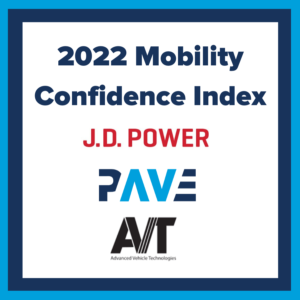As the automotive industry methodically advances toward greater vehicle automation, consumer readiness for higher levels of automation remains low—even declining slightly from 2021—making it challenging to bring vehicle buyers into the modern mobility movement. According to the J.D. Power 2022 U.S. Mobility Confidence Index (MCI) Study,SM released today, while consumer readiness for automated vehicles (AV) is low among all transportation modalities, consumers show greater comfort with transport of goods rather than transport of people in fully automated, self-driving commercial vehicles. The white paper detailing the study is available HERE.
Moreover, consumer understanding of automated vehicles remains virtually unchanged from a year ago, as 65% of consumers inaccurately define fully automated, self-driving vehicles. The significant deficiencies remain, as 56% of respondents incorrectly classified the driver-assist technologies available today as fully automated, self-driving technologies. The survey finds that consumers are lagging in understanding and preparation for higher levels of automation.
When asked about terminology used to describe different levels of automation, consumers showed further confusion regarding AV technologies. The study, which was conducted by J.D. Power, Partners for Automated Vehicle Education (PAVE) and the MIT Advanced Vehicle Technology (AVT) Consortium, shows that consumers prefer to use the same three terms (assisted driving, driver assistance and semi-autonomous) when describing multiple levels of automation (SAE Level 2TM and SAE Level 3TM).[1]While the distinctive technical descriptions may serve the industry, they do not align with consumer understanding.
“Our message has remained consistent,” said Lisa Boor, senior manager of auto benchmarking and mobility development at J.D. Power. “Industry stakeholders must work together to ensure clear and consistent messaging, and the use of consumer-facing terminology is part of this. Understanding which words and phrases resonate with consumers can help manage misconceptions and improve consumer understanding of AVs, which is a common goal.”
Among the 37% of consumers seeking information on fully automated, self-driving vehicles, online sources are the most commonly used. These consumers used online searches (54%); online videos (45%); and vehicle manufacturer/developer websites (39%). The same online preferences are cited among consumers who have yet to seek AV information. However, unique to this group is the preference for industry/academic experts (33%) over family/friends (24%), traditional media (14%) and social media (14%).
“AV technology offers great potential to make our roads safer, to improve transportation equity and to provide more transportation options to more people,” said Tara Andringa, PAVE executive director. “But we won’t realize that potential unless consumers understand the technology and know how to use it safely. These results show that we need to double down on our efforts to help consumers understand the technology, and we need to give the public clear, understandable language to use to describe these new features.”
Following are key findings from the 2022 study:
- Low consumer readiness for fully automated, self-driving vehicles: The index score for consumer AV readiness is 39 (on a 100-point scale), a 3-point decline from 2021. Consumers show low readiness levels on all metrics and have the lowest level of comfort riding in a fully automated, self-driving vehicle and using fully automated, self-driving public transit. Consumers consistently cite higher levels of comfort with transporting goods or riding in a fully automated, self-driving vehicle if unable or unwilling to drive due to age or injury.
- Consumers receptive to AV training: More than half (55%) of consumers are willing to complete training to operate an AV, and for those who say they know “a great deal” about AVs, the percentage increases to 87%. Nearly three-fourths (73%) of consumers expect that additional training would be required to own and operate a fully automated, self-driving vehicle. The likelihood of completing additional training is higher among younger generations.
- Opportunity for more effective learning methods: Consumers say the information sources used to learn about advanced driver assistance systems (ADAS) features on their current vehicle are the owner’s manual (32%); online search (27%); and dealer explanation (26%). Traditional vehicle education sources, such as car dealers and written materials, are inadequate for learning about complex ADAS and AV technologies, resulting in consumers seeking new learning methods, including in-person and interactive learning.
- Current ADAS usage drives future intent: Just more than one-fourth (26%) of consumers say they use active driving assistance, and frequent usage significantly affects future intent, as 71% who frequently use the feature desire it on their next vehicle. Regular ADAS users consider themselves early adopters of new technology; this is especially true for those using active driving assistance technology.
- Consumer comfort with automation may be overstated: Surprisingly, the percentage of respondents who indicate that driver assist technology is the maximum level of automation with which they are comfortable remains unchanged at 41%. Even those who indicate comfort with the highest levels of automation express a lack of trust and concern that the developing technology is not proven. One respondent stated, “I am not ready to trust my life to a fully automated vehicle. Need time to trust the system’s capabilities.” More than three-fourths (76%) say they want more information on how the vehicle technology meets government standards to feel comfortable with automated vehicles.
“These results provide further evidence that many consumers lack a clear understanding of the current status of automated and assisted driving technologies,” said Bryan Reimer, Ph.D., research scientist in the MIT Center for Transportation and Logistics AgeLab and a founder of MIT’s AVT consortium. “Highly automated driving technology is still very much in an evolving and testing stage; there are issues and limitations being encountered—and corrected. The sooner consumers recognize that they can leverage a range of ADAS features today to support their role as a driver, while still having overall responsibility, the faster we may begin to prepare for a future in which we prioritize safe, convenient and sustainable mobility choices that include highly automated vehicles.”
The J.D. Power 2022 Mobility Confidence Index Study is based on responses from 4,000 vehicle owners in the U.S. age 18 and older who completed a 15-minute online survey. The study results are balanced to basic census demographics to be nationally representative. The study was fielded in June 2022 and is based on six unique attributes of consumer comfort with fully automated, self-driving vehicles. The comprehensive metric measures consumer readiness for AV technology in several categories: personal vehicles; commercial vehicles; public transit; riding if unable to drive due to age or injury; sharing the road with other AVs; and consumer purchase intent.
About J.D. Power
J.D. Power is a global leader in consumer insights, advisory services and data and analytics. A pioneer in the use of big data, artificial intelligence (AI) and algorithmic modeling capabilities to understand consumer behavior, J.D. Power has been delivering incisive industry intelligence on customer interactions with brands and products for more than 50 years. The world’s leading businesses across major industries rely on J.D. Power to guide their customer-facing strategies.
J.D. Power has offices in North America, Europe, and Asia Pacific. To learn more about the company’s business offerings, visit JDPower.com/business.
About PAVE
Partners for Automated Vehicle Education (PAVE) is a 501(c)(3) nonprofit whose mission is to improve public understanding of advanced vehicle technologies in order to maximize the potential benefits in safety, mobility, and sustainability. PAVE members include automotive manufacturers, technology companies, and nonprofit organizations.
About MIT Advanced Vehicle Technology Consortium
The Advanced Vehicle Technology (AVT) Consortium is an academic-industry partnership founded in 2015 within the Massachusetts Institute of Technology (MIT) Center for Transportation and Logistics. It is supported by over 25 different automakers, insurance companies, suppliers, and research organizations through a pre-competitive collaboration designed to develop a data-driven understanding of drivers’ behavior with, and utilization of, vehicle automation, driver safety systems, and other technologies. AVT research aims to support a future of safe, convenient, and sustainable mobility through more effective human-centered vehicle technology development and consumer understanding of appropriate technology usage.
Media Relations Contacts
Geno Effler, J.D. Power; West Coast; 714-621-6224; media.relations@jdpa.com
Tara Andringa, PAVE; tara.andringa@pavecampaign.org
Arthur Grau, Massachusetts Institute of Technology; agrau@mit.edu
About J.D. Power and Advertising/Promotional Rules www.jdpower.com/business/about-us/press-release-info
 PAVE US
PAVE US PAVE EUROPE
PAVE EUROPE PAVE UK
PAVE UK

